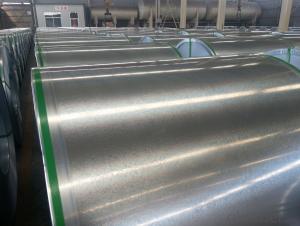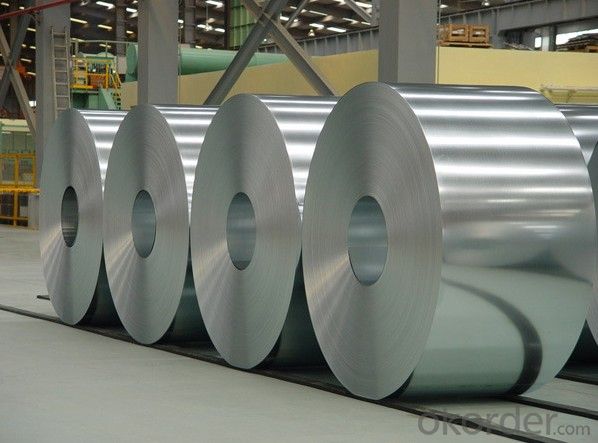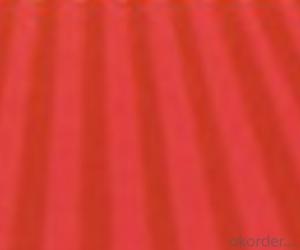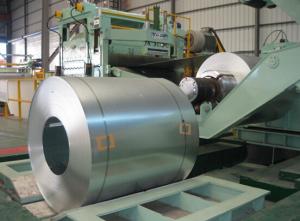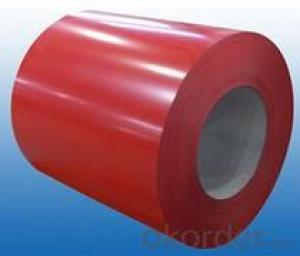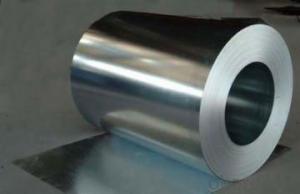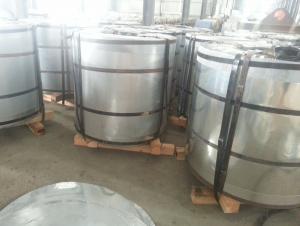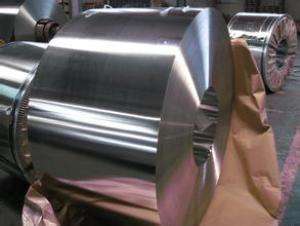Galvanzied Steel Coil
- Loading Port:
- China Main Port
- Payment Terms:
- TT OR LC
- Min Order Qty:
- -
- Supply Capability:
- -
OKorder Service Pledge
OKorder Financial Service
You Might Also Like
Commodity | Hot dip galvanized steel coil and sheet |
Technical Standard: | JIS 3302 / ASTM A653 / EN10143 |
Grade | DX51D / DX52D/ DX53D/ S250,280,320GD |
Types: | Commercial / Drawing / Deep Drawing / Structural quality |
Width | 500/650/726/820/914/1000/1200/1219/1220/1250mm |
Thickness | 0.12-2.8mm |
Type of coating: | Galvanized |
Zinc coating | Z30-275g/m2 |
Surface Treatment | Chromed / Skin-pass/ Oiled/Slightly Oiled/ Dry/ Anti-fingerprint |
Surface structure: | Zero spangle / minimized spangle / regular spangle/ big spangle |
ID coil | 508mm or 610mm |
Coil weight | 3-8 MT per coil |
Package: | Properly packed for ocean freight exportation in 20''containers |
Application: | Industrial panels, roofing and siding for painting |
Price terms | FOB,CFR,CIF |
Payment terms | T/T or L/C |
Delivery time | Within 30 days |
Remarks | Insurance is all risks |
MTC will be handed on with shipping documents | |
We accept the third party certification test,such as SGS/BV |
Technical data :
Hot dipped galvanized coil Technical Data
Chemical Composition | ||||||
GRADE | C | Si | Mn | P | S | Ti |
SGCC/DX51D+Z | ≤0.10 | ≤0.50 | ≤0.60 | ≤0.10 | ≤0.030 | ≤0.020 |
DX52D+Z | ≤0.10 | ≤0.50 | ≤0.60 | ≤0.10 | ≤0.030 | ≤0.020 |
SGCD/DX53D+Z | ≤0.10 | ≤0.30 | ≤0.50 | ≤0.05 | ≤0.030 | ≤0.020 |
SGCE/DX54D+Z | ≤0.10 | ≤0.30 | ≤0.30 | ≤0.03 | ≤0.020 | ≤0.020 |
DX56D+Z | ≤0.10 | ≤0.30 | ≤0.30 | ≤0.03 | ≤0.020 | ≤0.020 |
Structural | ≤0.20 | ≤0.60 | ≤1.70 | ≤0.10 | ≤0.045 | |
|
|
|
|
|
| |
Hot dipped galvanized steel coil Mechanical Properties | |||
GRADE | Yield Strength MPa | Tensile Strength MPa | Elongation % |
SGCC(DX51D+Z) | ≥205 | ≥270 | - |
SGCD(DX53D+Z) | - | ≥270 | 38 |
SGCE(DX54D+Z) | - | ≥270 | 40 |
DX56D+Z | - | ≥270 | 42 |
- Q: Can steel sheets be used for acoustic insulation?
- Steel sheets can be used for acoustic insulation to some extent, but they are not as effective as other materials specifically designed for this purpose. Steel sheets have some natural sound-blocking properties due to their density and mass, which can help reduce the transmission of sound waves. However, they are not as effective as materials like mineral wool, fiberglass, or acoustic foam, which are specifically engineered to absorb and dampen sound. While steel sheets can provide a certain level of noise reduction, they are more commonly used for structural purposes in buildings rather than as primary acoustic insulation material. For optimal acoustic insulation, it is recommended to use materials that have been specifically designed and tested for noise reduction, as they will offer better performance in terms of absorbing and blocking sound waves.
- Q: Can the steel sheets be used for metal stamping?
- Yes, steel sheets can be used for metal stamping. Steel is a commonly used material for metal stamping processes due to its durability and strength. The steel sheets are typically cut into specific shapes and sizes, and then undergo a stamping process where a die and punch set are used to form the desired shape on the steel sheet. This process can be used to create various products such as automotive parts, household appliances, and industrial components.
- Q: Can the steel sheets be used for kitchen countertops?
- Kitchen countertops can indeed be made from steel sheets. Steel proves itself as a durable and enduring material, capable of withstanding high temperatures, rendering it fitting for kitchen purposes. Moreover, it is resistant to stains, scratches, and water damage, simplifying cleaning and maintenance. Furthermore, steel countertops can lend a sophisticated and contemporary appearance to any kitchen. Nevertheless, it is essential to be mindful that steel is susceptible to scratches and dents, necessitating caution when handling sharp utensils or heavy objects on the countertop.
- Q: What factors affect the cost of steel sheets?
- Several factors affect the cost of steel sheets, including the current market demand and supply, raw material prices, manufacturing and processing costs, transportation and logistics expenses, as well as any applicable trade tariffs or taxes. Additionally, factors such as the type and quality of steel, size and thickness of the sheets, as well as any special finishes or coatings required, can also impact the overall cost.
- Q: Are the steel sheets suitable for marine environments?
- Indeed, marine environments find steel sheets to be a suitable option. Steel, renowned for its robustness, durability, and ability to withstand corrosion, is frequently employed in marine settings. To enhance their resistance to saltwater exposure, steel sheets are often fortified with protective coatings like galvanization or paint. Furthermore, steel sheets can be customized to meet specific criteria such as thickness and size, rendering them highly versatile for a range of marine applications including shipbuilding, offshore structures, and marine equipment. All in all, steel sheets are a dependable and fitting choice for deployment in marine environments.
- Q: What are the different finishes available for steel sheets?
- There are several different finishes available for steel sheets, including hot rolled, cold rolled, galvanized, and stainless steel finishes.
- Q: Is the steel plate 1.5 meters wide and 2 meters wide at the same price? .
- The steel plate price is generally not the width, they only according to the different material steel plate, gives you to quote the unit price.
- Q: Are steel sheets suitable for roofing?
- Yes, steel sheets are suitable for roofing. Steel is a strong and durable material that can withstand various weather conditions, including high winds, heavy rain, and snow. It also offers excellent protection against fire and is resistant to corrosion. Additionally, steel sheets are lightweight, easy to install, and can be designed in different styles and colors to enhance the aesthetic appeal of a building.
- Q: Are steel sheets suitable for exterior wall cladding?
- Yes, steel sheets are suitable for exterior wall cladding. Steel is a durable and strong material that offers excellent resistance to weather conditions, including rain, wind, and sunlight. It is also low-maintenance and can be easily customized to achieve various aesthetic designs. Additionally, steel is fire-resistant, making it a safe choice for exterior wall cladding.
- Q: Can the steel sheets be used for industrial machinery?
- Yes, steel sheets can be used for industrial machinery. Steel is a popular choice for the construction of industrial machinery due to its high strength, durability, and resistance to wear and tear. Steel sheets can be shaped, cut, and welded to create various components and parts required in industrial machinery. The versatility of steel allows manufacturers to design and fabricate machinery with precise specifications and requirements. Moreover, steel's ability to withstand heavy loads, extreme temperatures, and corrosive environments makes it suitable for use in a wide range of industrial applications.
Send your message to us
Galvanzied Steel Coil
- Loading Port:
- China Main Port
- Payment Terms:
- TT OR LC
- Min Order Qty:
- -
- Supply Capability:
- -
OKorder Service Pledge
OKorder Financial Service
Similar products
Hot products
Hot Searches
Related keywords
